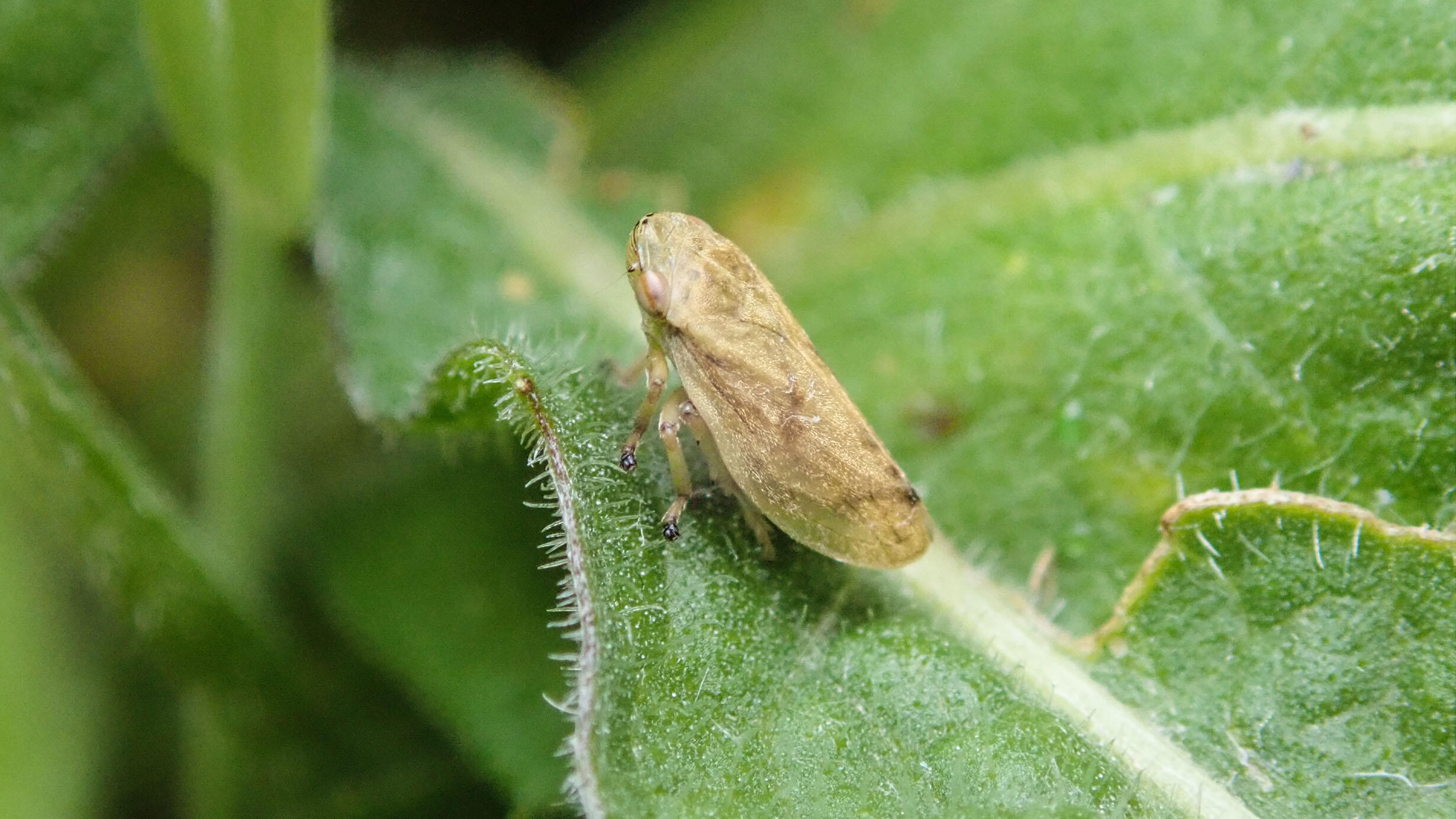 An adult meadow spittlebug (Philaenus spumarius). This is the most common of several color forms.
An adult meadow spittlebug (Philaenus spumarius). This is the most common of several color forms.© Claire Harkin
The meadow spittlebug, also known as the froghopper, carries a slew of superlatives. The best jumper of any insect proportional to body size. The largest measured sucking power of any bug. An exceptional urinator, excreting the human equivalent of 2,500 gallons of urine a day.
Now, this little bug has one more title to its name. New research published today in the journal PLOS ONE reveals that the meadow spittlebug can feed on at least 1,300 species of host plants, more than twice the number of any other insect. But the news comes with some disturbing implications: with a wide geographic range and the ability to thrive in climates spanning from Hawaii to just south of the Arctic Circle, the spittlebug is also a serious agricultural threat because it can carry bacteria from plant to plant while it feeds.
“Thirteen hundred host plants means 1,300 opportunities to spread pathogenic bacteria in natural and agricultural environments, a sobering wake-up call,” said the study’s lead author Vinton Thompson, a research associate in the Museum’s Division of Invertebrate Zoology.
Meadow spittlebugs (Philaenus spumarius) suck sap from plants with straw-like mouthparts, picking up bacteria along the way and becoming vectors for plant diseases, most recently including those caused by the Xylella fastidiosa. Hitching a ride on meadow spittlebugs, X. fastidiosa has been fatal to crops ranging from olive trees in Italy to grapevines in California to citrus trees in South America and almond trees in Spain.
© Claire Harkin
To help predict what other plant species and ecosystems are at risk, Thompson teamed up with collaborators in the United Kingdom to document the bug’s host range. The scientists combined data from published literature, host records associated with museum specimens, observations—many from Thompson, who has been studying host plants of spittlebugs for 50 years—and data from a citizen science effort carried out in Britain from 2019-2021 to help prepare for the possible introduction of X. fastidiosa to the UK.
Scientists confirmed what they long suspected: the wide-ranging meadow spittlebug feeds on more hosts than any other insect, with more than 1,300 species of plants across 117 families, ranging from ferns, herbs, shrubs, vines and trees to grasses and forbs.
“The spittlebug is the ultimate herbivore champion,” said study author Claire Harkin, from the University of Sussex. “It will feed on just about every imaginable kind of vascular plant except those submerged in aquatic environments.”
More research is needed to determine why spittlebugs can feed on so many types of plants, but the scientists suspect it’s due to the bugs’ preference for sap from the xylem, which is the main water-carrying structure of the plant.
Most sap-eating bugs feed from the plant’s phloem, which is the tissue that transmits sugar and other metabolic compounds. Unlike sap from the phloem, the liquid in the xylem is similar across a diverse range of host plants.
“These bugs feed on almost anything they can get at with their mouth parts,” Thompson said. “Unfortunately, that means there is tremendous potential for the spread of X. fastidiosa in natural ecosystems if it’s introduced. This review is just the first step in thinking about how to control this bug and the diseases it spreads.”